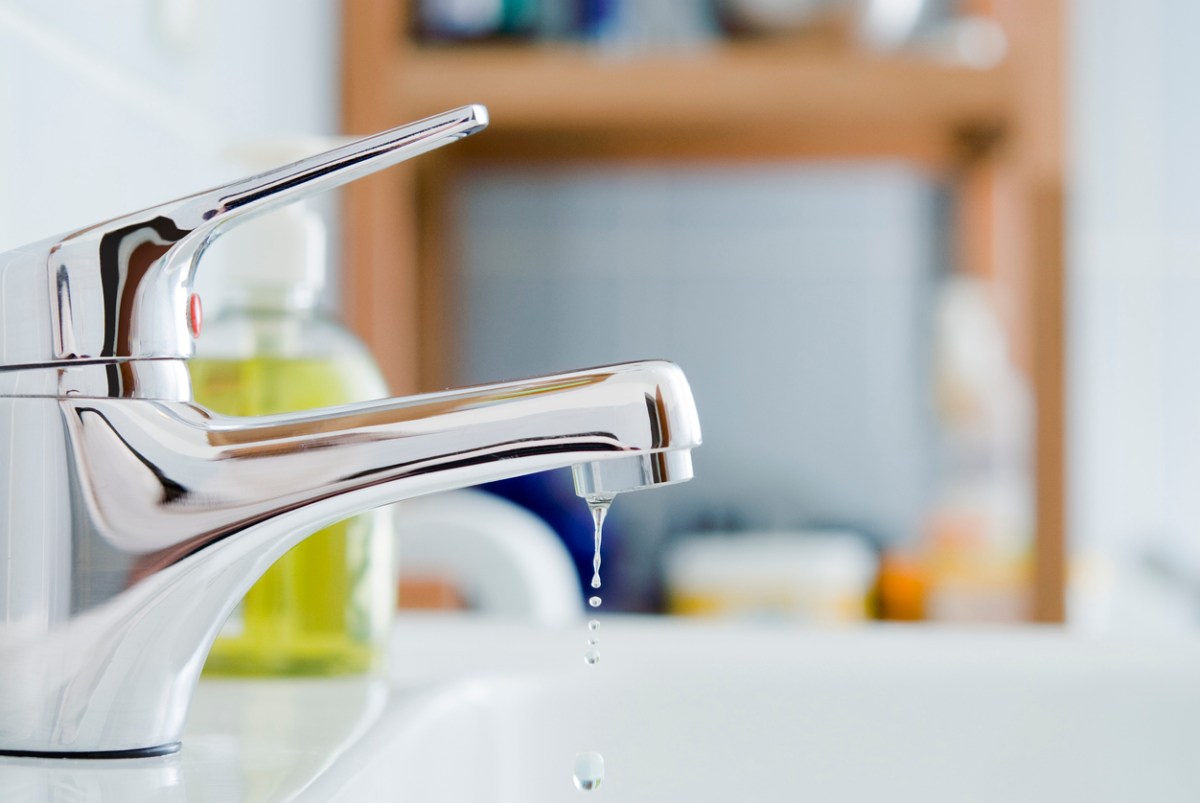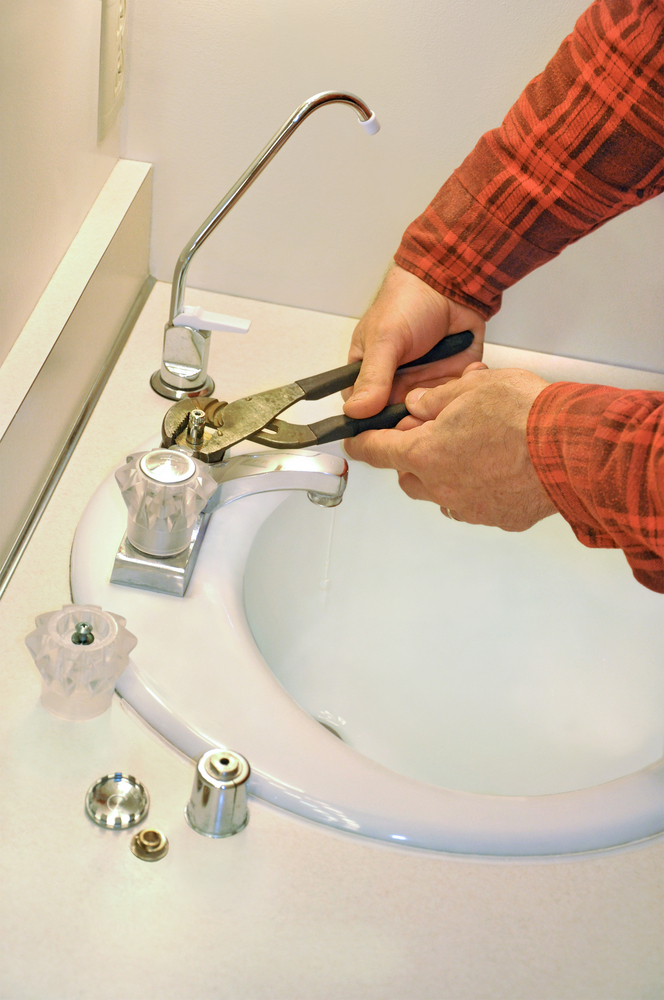We have discovered this great article on Why Are My Faucets Dripping (And Can I Fix It Myself)? down the page on the internet and believe it made sense to discuss it with you on this site.

Trickling faucets may feel like a minor hassle, yet their influence goes beyond just the aggravation of the sound. From drainage to sustaining unneeded financial prices and wellness dangers, neglecting a leaking faucet can result in various consequences. In this article, we'll look into why it's vital to address this usual family issue promptly and properly.
Wastefulness of Water
Environmental Impact
Trickling faucets add substantially to water wastage. According to the Epa (EPA), a single tap leaking at one drip per secondly can waste greater than 3,000 gallons of water per year. This not only pressures water sources yet likewise influences environments and wildlife based on them.
Step-by-Step Overview to Repairing a Dripping Tap
Devices Required
Prior to trying to fix a leaking tap, gather the needed devices, including an adjustable wrench, screwdrivers, replacement components (such as washing machines or cartridges), and plumber's tape.
Usual Faucet Issues and Their Solutions
Identify the kind of faucet and the certain concern creating the drip. Usual troubles consist of damaged washers, corroded shutoff seats, or defective O-rings. Refer to supplier instructions or online tutorials for detailed support on fixings.
Financial Expenses
Boosted Water Costs
Beyond the ecological influence, trickling taps can pump up water expenses significantly. The built up wastage with time converts right into higher utility expenditures, which might have been avoided with prompt repair services.
Potential Residential Property Damage
In addition, extended dripping can cause damage to components and surfaces bordering the faucet. Water buildup can trigger discoloration, corrosion, and also structural problems if left neglected, resulting in extra repair prices.
Health and wellness Problems
Mold and Mildew Development
The consistent presence of dampness from a dripping faucet produces an excellent environment for mold and mildew development. These fungis not just endanger indoor air quality but likewise present health and wellness threats, specifically for individuals with respiratory conditions or allergies.
Waterborne Diseases
Stagnant water in dripping taps can come to be a breeding place for microorganisms and various other microorganisms, enhancing the risk of waterborne diseases. Contaminants such as Legionella microorganisms thrive in stationary water, possibly resulting in serious ailments when consumed or inhaled.
Do it yourself vs. Expert Repair work
Advantages and disadvantages of DIY Repair Service
While some may try to deal with a trickling faucet themselves, do it yourself repair services come with their very own set of difficulties. Without proper understanding and devices, DIY efforts can exacerbate the problem or lead to incomplete fixings, prolonging the issue.
Advantages of Employing a Specialist Plumber
Hiring an expert plumber makes sure that the underlying cause of the trickling tap is addressed efficiently. Plumbing professionals possess the know-how and devices to detect and repair faucet concerns effectively, conserving time and decreasing the threat of more damages.
Ecological Responsibility
Individual Payment to Preservation
Taking duty for dealing with trickling taps lines up with wider efforts toward water preservation and ecological sustainability. Every person's actions collectively make a substantial effect on protecting priceless sources.
Sustainable Living Practices
By focusing on timely repair work and taking on water-saving routines, individuals add to sustainable living practices that profit both present and future generations.
Safety nets
Regular Upkeep Tips
To prevent trickling faucets, do regular maintenance such as cleansing aerators, examining for leakages, and replacing worn-out components promptly. Furthermore, take into consideration setting up water-saving tools or updating to much more effective components.
Importance of Prompt Repair Works
Resolving dripping taps as soon as they're discovered stops more water wastefulness and possible damage, ultimately saving both water and money in the long run.
Effect On Building Worth
Assumption of Well-Maintained Property
Maintaining a home in good condition, including dealing with maintenance problems like dripping faucets, boosts its viewed value and desirability amongst prospective purchasers or tenants.
Impact on Resale Worth
Residences with well-maintained plumbing components, including taps, command greater resale values in the property market. Resolving leaking taps can contribute to a favorable perception throughout residential property evaluations and arrangements.
Conclusion
Attending to a dripping faucet surpasses mere comfort; it's a necessary step toward saving water, reducing financial expenses, and guarding health and home. Whether via do it yourself repairs or professional support, acting to deal with trickling taps is a small yet impactful means to promote liable stewardship of resources and contribute to a much healthier, extra lasting future.
How to Fix a Leaky Faucet: Step-by-Step Repair Guide
A leaky faucet may seem like a simple annoyance, but if it's not fixed promptly, that leak could cost hundreds to potentially thousands. From water damage to mold, mildew, and high water bills, even a tiny leak can be catastrophic if left unattended. Damage like this can even affect the overall value of your home, so it's important to take the right approach for leaky faucet repair. You may need the help of a plumber in some cases, but we've got a few tips you can try on how to fix a leaky faucet before calling the pros.
Four Faucet Types
When you're learning how to fix a leaky faucet, the first step is knowing what kind of faucet you're working with! There are four common types.
Cartridge Faucets
Cartridge faucets come in one- or two-handled varieties. In one-handled cartridge faucets, hot and cold water combines in a single cartridge. In the two-handled versions, hot and cold water are controlled separately and mixed in the faucet.
Ball Faucets
Ball faucets have a single lever you push up and down to adjust the pressure and rotate to change the temperature. A slotted metal ball controls the amount of water allowed into the spout.
Compression Washer Faucets
They're the oldest type of faucet, but they're still used in many homes — especially older ones. Compression faucets have two separate handles that, when turned, raise or lower the washer that seals a water valve. This valve stops water from flowing through the faucet when it is turned off.
Disc Faucets
Disc faucets rarely need to be repaired due to their maintenance-free design. The water flow is controlled by two discs — the upper one raises and lowers against a fixed lower disc, creating a watertight seal. If your disc faucet starts leaking, you may need to replace the seals or clean residue buildup from the inlets.
Fixing a Leaky Faucet
Step 1: Turn Off the Water
Whether you're learning how to fix a leaky bathtub faucet or how to fix a leaky kitchen faucet, always turn off the water supply to your working area when you're fixing a leak. The last thing you want is a flood added to your list of things to fix.
Look for the shutoff valves below your sink or around the tub and turn them clockwise to stop the water flow. If your faucet doesn't have shutoff valves, you may need to turn off the water for the whole house. Check to make sure it's off by turning the faucet on. If nothing comes out, you're ready to start the repair.
Step 2: Take Apart the Faucet
How you disassemble your faucet depends on the type of fixture you have. You can use a flathead screwdriver to remove the caps on top of the handle or handles for cartridge and compression faucets. Inside, you should see handle screws. Unscrew these with a screwdriver to remove the handle.
Disc- and ball-style faucets will typically have an inlet screw near the handle, and removing that will reveal the interior of the faucet.
Detach the Valve Stem
For cartridge- and compression-style faucets, you'll see the inner valve stem or cartridge once you remove the faucet handles. If you have a compression faucet, unscrew the brass valve stem. If you have a cartridge faucet, pull out the cartridge. If your cartridge has been in place for a while, it may require some tools or extra force to remove it due to mineral deposits.
Examine and Replace Parts
Once you've removed the parts, check them out to confirm what needs to be replaced. You may see corroded rubber washers, O-rings, stems, or cartridges. On a ball-style faucet, check the seats and springs for damage.
If you need to repair a leaky disc faucet, check the inlet and seals on the lower disc.
Once you determine what parts must be replaced, visit your local hardware store. Bring the damaged parts with you to ensure you can purchase the correct components to replace them.
Clean Valves and Faucet Cavity
If you've removed a stem or cartridge, you may notice mineral buildup in the faucet's threads. Use white vinegar to clean the valve seat by soaking it for a few minutes, then scrub it away with a soft toothbrush and rinse with warm water. You can also clean the interior of the faucet in the same way.
Reassemble the Faucet
Once your faucet is cleaned and the required parts have been replaced, it's time to reassemble it. Put the pieces back together and slowly turn the water supply back on. Doing this slowly is crucial because too much initial water pressure can damage the new hardware you've just installed.
https://homewarranty.firstam.com/blog/how-to-fix-leaky-faucet

Do you enjoy reading about Why Is It Important To Fix Your Leaking Tap/Faucet?? Put a remark down the page. We will be happy to know your suggestions about this piece. Hoping that you come back again in the near future. Enjoyed reading our article? Please quickly share it. Let another person locate it. We treasure your readership.